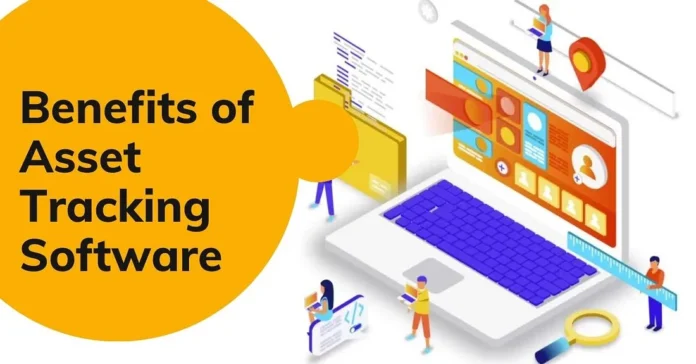Asset tracking software is a significant game-changer for businesses seeking to optimize their operations and boost productivity. By implementing an efficient system to monitor and manage their assets, organizations can effectively streamline workflows, reduce costs and improve overall efficiency.
In this article, we will explore the top ten benefits of asset management software, showcasing how it revolutionizes businesses across various industries.
Enhanced Asset Visibility :
Asset tracking software provides real-time visibility into the location and status of assets, eliminating the need for manual tracking processes. By utilising technologies like RFID tags, barcodes, or GPS, businesses can accurately track assets throughout their lifecycle.
This enhanced visibility enables efficient resource allocation, reduces time wasted searching for assets, and minimises the risk of loss or theft.
Optimal Asset Utilisation :
It enables organisations to maximise the utilisation of their assets. By analysing data on asset usage patterns, managers can identify underutilised or idle assets and make informed decisions about redistribution or disposal.
This optimization leads to cost savings by eliminating unnecessary purchases and enables better allocation of resources to areas where they are most needed, resulting in increased operational efficiency.
Improved Maintenance Planning :
It facilitates proactive maintenance planning by providing accurate asset conditions and usage history data. By monitoring maintenance schedules, organisations can identify maintenance requirements in advance, ensuring that assets are serviced at the right time.
This proactive approach minimises the risk of unplanned downtime, extends asset lifespan, and reduces repair costs, ultimately improving operational reliability and customer satisfaction.
Effective Inventory Management :
It streamlines inventory management processes by automating data collection and updates. Accurate and real-time inventory information helps organisations avoid stockouts or excess inventory, leading to optimised supply chain management.
By having visibility into stock levels, managers can make data-driven decisions regarding reorder points, storage locations, and demand forecasting, resulting in reduced carrying costs and improved customer service.
Enhanced Compliance and Reporting :
It simplifies compliance with regulations and industry standards. By maintaining detailed records of asset information, maintenance logs, and calibration history, businesses can easily demonstrate adherence to compliance requirements during audits.
Furthermore, the software enables automated reporting, generating comprehensive reports on asset performance, utilization, and maintenance history, empowering organizations to make informed decisions and drive continuous improvement.
Reduced Loss and Theft :
Implementing asset-tracking software significantly reduces the risk of asset loss or theft. Real-time tracking and monitoring capabilities enable businesses to quickly identify misplaced or stolen assets, triggering immediate actions to recover or replace them.
Additionally, the software can support geofencing and alerts, notifying managers if assets leave designated areas. This enhanced security not only protects valuable assets but also minimizes financial losses and disruption to operations.
Increased Employee Accountability :
It promotes accountability by assigning assets to specific employees and tracking their usage. By recording who has custody of each purchase, managers can hold employees responsible for their care and timely return.
This accountability discourages misuse, damage, or unauthorized transfers, fostering a culture of responsibility and reducing the likelihood of lost or neglected assets.
Streamlined Auditing and Tax Reporting :
It simplifies auditing processes and tax reporting by providing accurate records of asset values and depreciation. By automating depreciation calculations and maintaining up-to-date asset information, businesses can streamline the preparation of financial statements and tax reports.
This reduces the time and effort required for audits, ensures compliance with accounting standards, and facilitates accurate financial planning.
Scalability and Flexibility :
It offers scalability and flexibility to accommodate the evolving needs of businesses. Whether an organization has a few assets or a vast inventory, the software can scale accordingly, adapting to increasing asset volumes and locations.
Additionally, cloud-based solutions provide anytime, anywhere access to asset data, allowing multiple users to collaborate and ensuring seamless integration with other systems.
Return on Investment (ROI) :
Implementing asset tracking software delivers a substantial return on investment. By optimising asset utilization, reducing losses, and improving operational efficiency, businesses can achieve significant cost savings and productivity gains.
The software’s ability to streamline processes, enhance decision-making, and improve customer service ultimately leads to increased revenue and profitability.
Conclusion
The Asset tracking software offers numerous benefits to organizations across industries, running from enhanced visibility and optimal asset utilization to improved compliance and scalability.By leveraging this technology, businesses can streamline their operations, reduce costs, minimize risks, and maximize efficiency.
Embracing asset tracking software is a strategic move that empowers organizations to stay competitive in today’s fast-paced and asset-intensive business environment.
1 solve real-world problems
2 writing Optimized Code
3 Foundation for Advanced Concepts
4 path to Becoming a Computer Scientist
5. Emerging Tech Stacks
6. Cracking to tech companies
7. Problem-solving skills
8. Continuous learning and growth
Source: https://righttimenews.com/top-10-benefits-of-assets-tracking-software/

